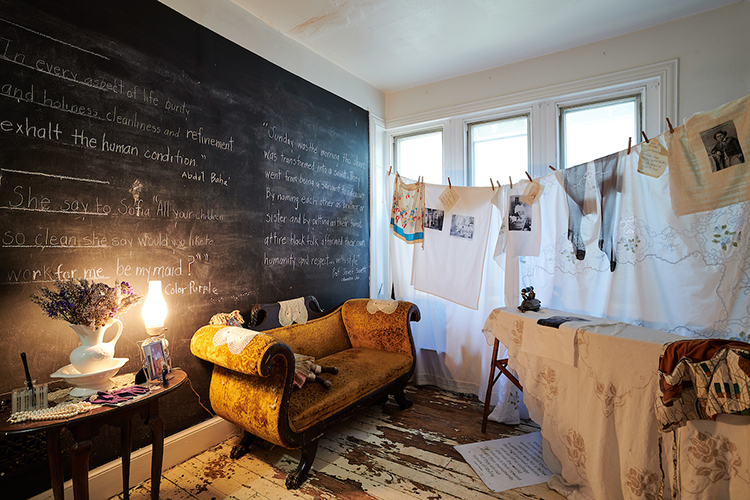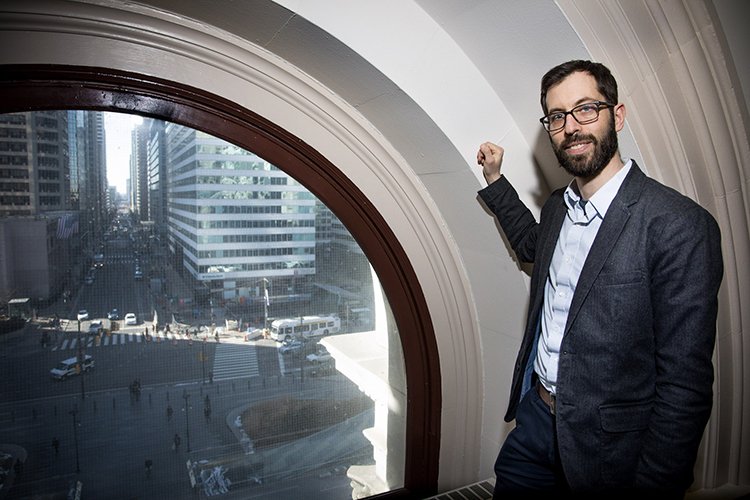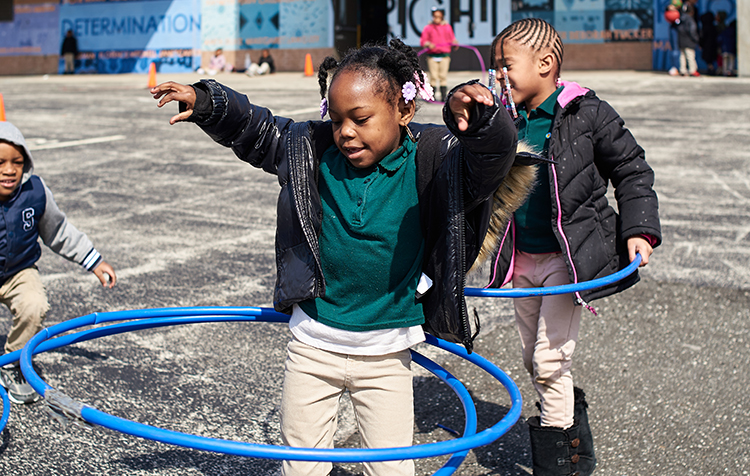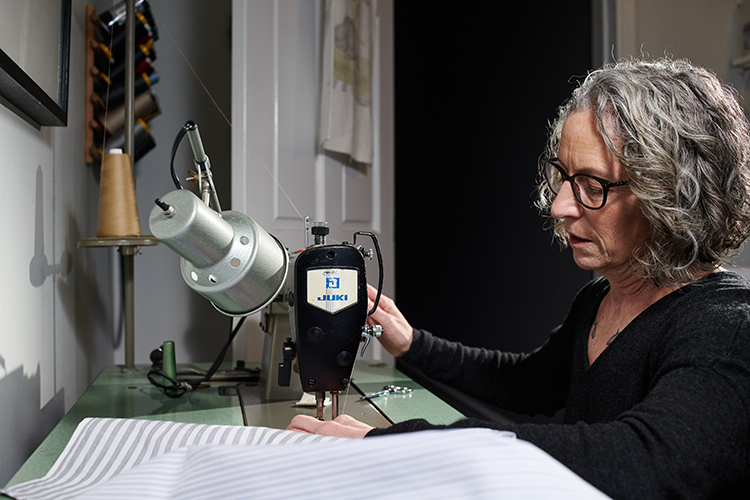by Constance Garcia-Barrio
MT. Rushmore would give a truer portrait of our nation’s makers if the sculptor had hewn kinky hair and a shapely eye into George Washington’s massive left cheek and a second eye, a pug nose, and luscious lips into the right side of Thomas Jefferson’s face.
“Black and brown girls have done so much for so many, but they’re erased,” says Vashti DuBois, 58, founder and executive director of The Colored Girls Museum (TCGM) at 4613 Newhall Street in Germantown. Her museum wrestles that exclusion to the ground.
Established in September 2015, TCGM—the only museum of its kind, says DuBois—displays stunning photography, pottery, dolls and fiber art to give credit where it’s due.
“So much depends on cleaning women, childcare workers and other colored women who remain anonymous,” says DuBois, a Brooklyn native who lives in the 129-year-old Victorian twin that houses the museum. “TCGM shows colored girls from the ordinary to the extraordinary.” Michael Clemmons and Ian Friday, who helped to establish it, serve as curator and associate director, respectively.
DuBois, a theatre artist and literacy coach, came up with the idea of a museum of black women’s artifacts during her sophomore year at Wesleyan University. When she began to re-knit her life seven years ago after her husband of 18 years, Al Stewart, died in a car crash, she asked her friends to donate objects. The first exhibit, “Open for Business,” was a 2015 Fringe Festival event.
“People have been extremely generous with me,” DuBois says.
This year’s exhibition, “In Search of the Colored Girl,” takes visitors on a journey of discovery.
“On our docent-led tours, patrons become a ‘search party’ that unearths aspects of the colored girl,” DuBois says. Each floor of the house has a unifying theme.
The first floor presents protection, or the colored girl’s need for it. An altar with three levels, luminous with candlelight, heightens the meaning of searching for the colored girl.
“It acknowledges the 75,000 black and brown women and girls missing in this country today,” says the artist and poet Andrea Walls, 55.
A description of a missing girl is pasted on a lit white candle in a glass container.
“This situation isn’t new,” Walls says. “After the Civil War, newly freed families sought mothers, daughters, and sisters separated from them during enslavement through newspaper ads.”
Walls has placed a cushion in front of the altar so that visitors can say a prayer for the missing girls.
Another artist confronts the colorism—society’s message that the lighter your skin, the greater your beauty—that dogged her in childhood.
“She often heard people say, ‘You’re pretty for a dark girl,’” DuBois explains. (Colorism does other damage. A 2014 study by Villanova University sociology professor Lance Hannon shows that dark-skinned girls receive harsher punishment in school.) The urge to define beauty on her own terms stands at the heart of the photographic self-portraits. (See the wrenching “Dark Girls” documentary on YouTube.)
The ceramic vessels by museum curator Michael Clemmons, austere in their clean lines, stand as memorials to the little girls killed at the 16th Street Baptist Church in 1963 by a bomb planted by white supremacists.
The photographs of Iris Maldonado help to broaden the awareness of who “the colored girl” includes. Maldonado’s photos of Puerto Rico illuminate her Afro-Latino identity and remind one that Spain and Portugal brought Africans to the Caribbean and South America in the 1500s. Plenty of colored girls live south of the border.
“We try to capture the colored girl in ways they’re seldom seen or regarded,” DuBois says.
TCGM more than succeeds with a huge photographic portrait of a gorgeous young woman. The more one looks at her in a pose that recalls Renaissance paintings, the more disturbing the picture. Her dress, it turns out, is made of paper. A close look at the draping of what might be jewels reveals an adornment of chains. Her seemingly handsome brooch depicts a horrible act.
The second floor, whose theme is praise, has the museum’s only permanent exhibition: a room devoted to washerwomen, a familiar figure in black culture in North and South America.
“Sometimes there’s shame that our mothers or grandmothers did this work, but washerwomen kept their families going when the men couldn’t find work,” curator Monna Morton says.
Scholar W.E.B. DuBois, in his 1897 landmark book “The Philadelphia Negro: A Social Study” hits the nail on the head when he notes the financial troubles of young working-class black couples, often the sons and daughters of freedmen. “…[There]comes a struggle which generally results in the wife’s turning laundress.”
On the other hand, historically black colleges relied, in part, on small donations from washerwomen as seed money. The artifacts, such as antique irons, belonged to the grandmothers of Morton or Denys Davis, curators of the exhibit.
The third floor represents grace. Small collaged cut-paper dresses by Lavett Ballard, known for her female images of the African diaspora, cover one wall. The dresses suggest playfulness and perhaps the possibility that the colored girl, no matter her age, can find ways to nurture the girl who lives inside. It also displays Ballard’s female figure, made of wire and synthetic hair.
An extensive collection of books—think Maya Angelou, Alvin Ailey dancers, children’s books and more—allows visitors to continue to delve into the lives and creativity of the colored girl.
TCGM extends outside to the grounds. “In summer we grow herbs like sage, valerian, and more that colored girls find healing,” says Ian Friday, 53, TCGM’s associate director and performance curator. “We host concerts, talks by artists, and poetry readings in the backyard.”
The Colored Girls Museum, is open Sundays from noon to 4 p.m. General admission is $15 and for students and seniors 65+ with ID, $10. To learn more call (267) 630-4438 or visit www.coloredgirlsmuseum.com.








